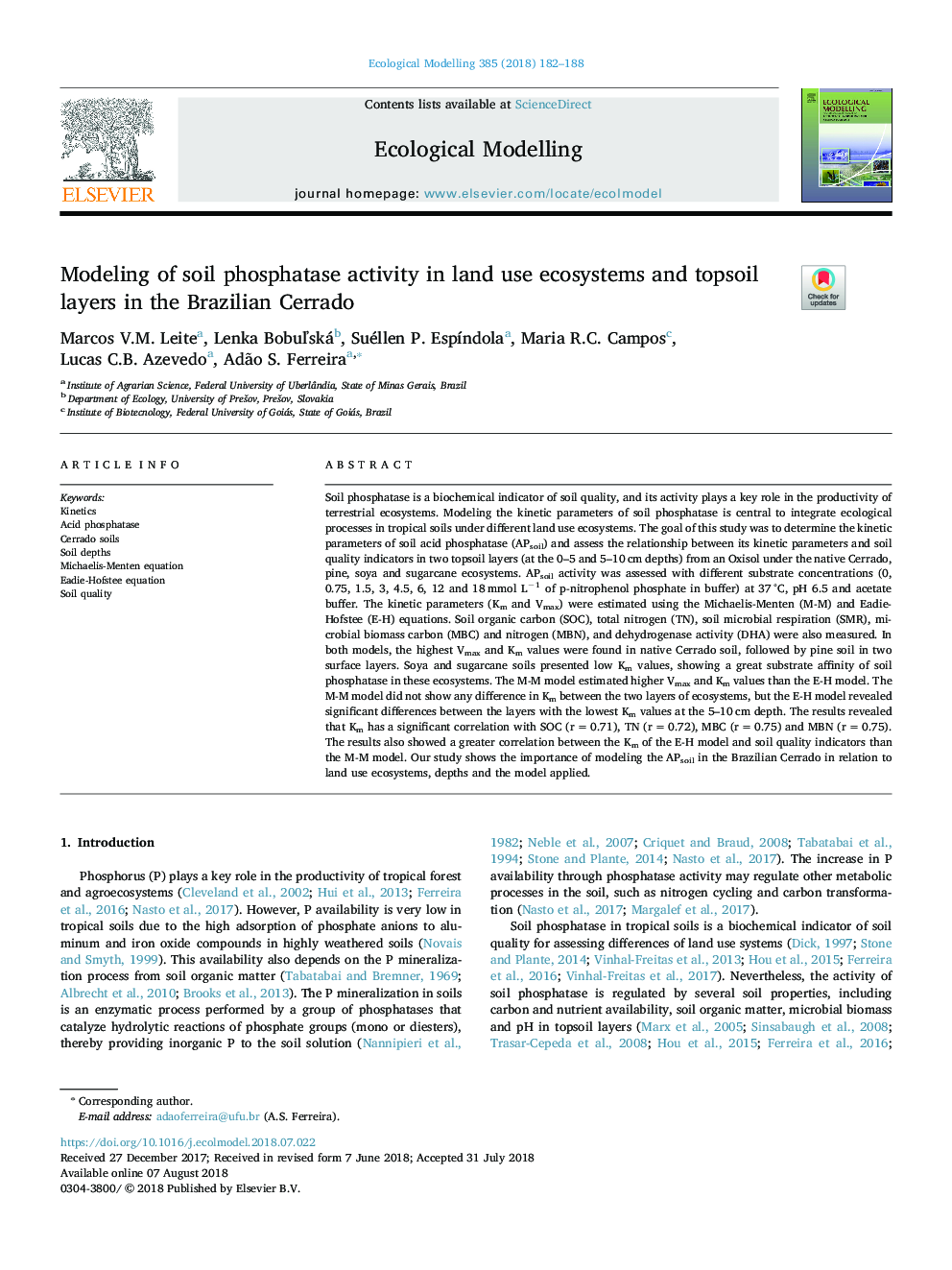| Article ID | Journal | Published Year | Pages | File Type |
|---|---|---|---|---|
| 8845967 | Ecological Modelling | 2018 | 7 Pages |
Abstract
Soil phosphatase is a biochemical indicator of soil quality, and its activity plays a key role in the productivity of terrestrial ecosystems. Modeling the kinetic parameters of soil phosphatase is central to integrate ecological processes in tropical soils under different land use ecosystems. The goal of this study was to determine the kinetic parameters of soil acid phosphatase (APsoil) and assess the relationship between its kinetic parameters and soil quality indicators in two topsoil layers (at the 0-5 and 5-10âcm depths) from an Oxisol under the native Cerrado, pine, soya and sugarcane ecosystems. APsoil activity was assessed with different substrate concentrations (0, 0.75, 1.5, 3, 4.5, 6, 12 and 18âmmol Lâ1 of p-nitrophenol phosphate in buffer) at 37â°C, pH 6.5 and acetate buffer. The kinetic parameters (Km and Vmax) were estimated using the Michaelis-Menten (M-M) and Eadie-Hofstee (E-H) equations. Soil organic carbon (SOC), total nitrogen (TN), soil microbial respiration (SMR), microbial biomass carbon (MBC) and nitrogen (MBN), and dehydrogenase activity (DHA) were also measured. In both models, the highest Vmax and Km values were found in native Cerrado soil, followed by pine soil in two surface layers. Soya and sugarcane soils presented low Km values, showing a great substrate affinity of soil phosphatase in these ecosystems. The M-M model estimated higher Vmax and Km values than the E-H model. The M-M model did not show any difference in Km between the two layers of ecosystems, but the E-H model revealed significant differences between the layers with the lowest Km values at the 5-10âcm depth. The results revealed that Km has a significant correlation with SOC (râ=â0.71), TN (râ=â0.72), MBC (râ=â0.75) and MBN (râ=â0.75). The results also showed a greater correlation between the Km of the E-H model and soil quality indicators than the M-M model. Our study shows the importance of modeling the APsoil in the Brazilian Cerrado in relation to land use ecosystems, depths and the model applied.
Keywords
Related Topics
Life Sciences
Agricultural and Biological Sciences
Ecology, Evolution, Behavior and Systematics
Authors
Marcos V.M. Leite, Lenka Bobuľská, Suéllen P. EspÃndola, Maria R.C. Campos, Lucas C.B. Azevedo, Adão S. Ferreira,
